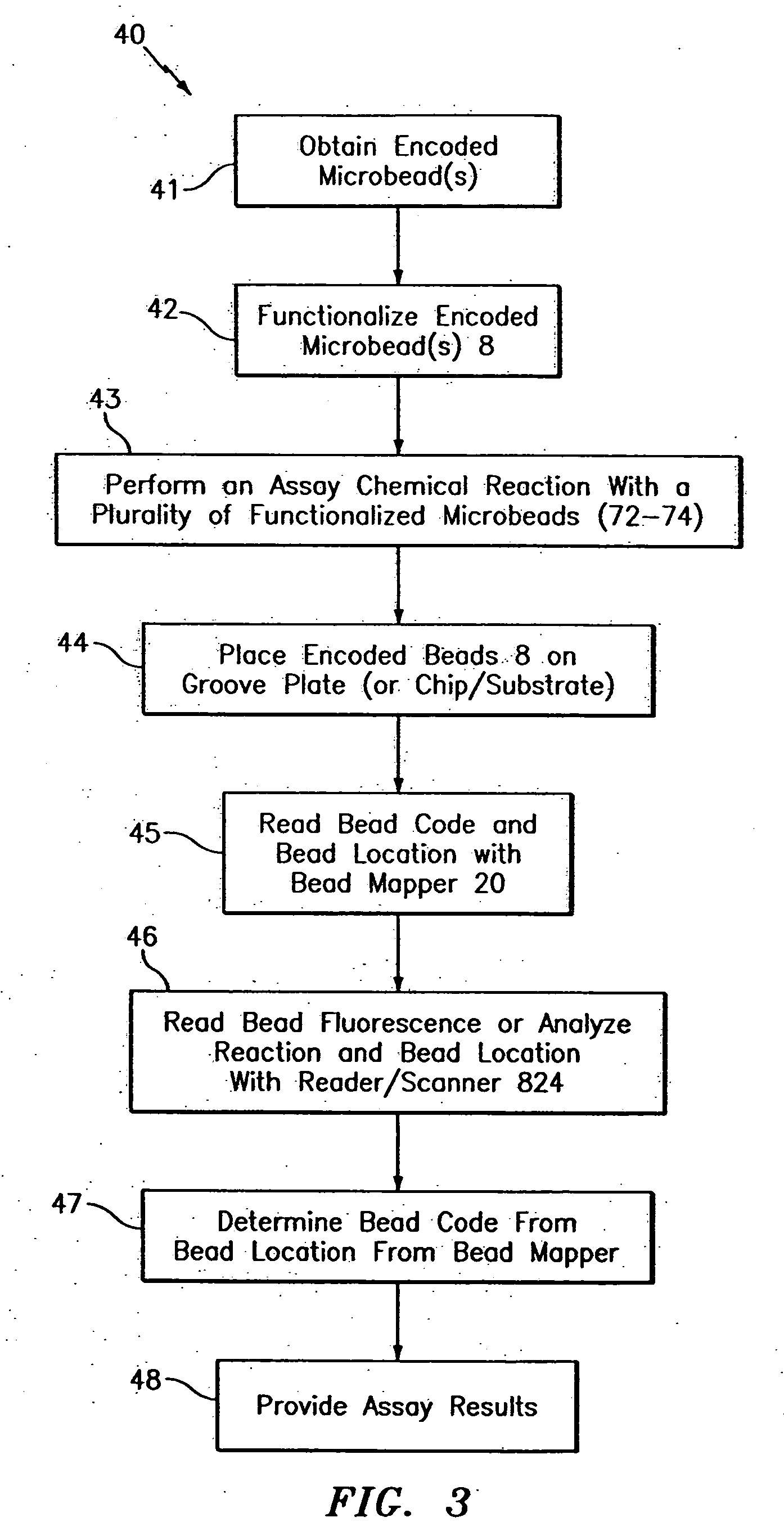Hybrid random bead/chip based microarray
a microarray and random bead technology, applied in the field of optical identification, can solve the problems of limited number of identifiable codes in the current bead technology, not as flexible or economically customizable as beads,
- Summary
- Abstract
- Description
- Claims
- Application Information
AI Technical Summary
Benefits of technology
Problems solved by technology
Method used
Image
Examples
Embodiment Construction
[0079]Referring to FIG. 1, a hybrid random bead / chip based microarray includes a diffraction grating-based optical identification element 8 (or encoded element or coded element) which comprises a known optical substrate 10, having an optical diffraction grating 12 disposed (or written, impressed, embedded, imprinted, etched, grown, deposited or otherwise formed) in the volume of or on a surface of a substrate 10. The grating 12 is a periodic or aperiodic variation in the effective refractive index and / or effective optical absorption of at least a portion of the substrate 10.
[0080]The optical identification element 8 described herein is similar to that described in Copending U.S. patent applications, Ser. No. 10 / 661,234, filed Sep. 12, 2003, entitled “Diffraction Grating-Based Optical Identification Element”, which is incorporated herein by reference in its entirety.
[0081]In particular, the substrate 10 has an inner region 20 where the grating 12 is located. The inner region 20 may b...
PUM
| Property | Measurement | Unit |
|---|---|---|
| length | aaaaa | aaaaa |
| refractive index n1 | aaaaa | aaaaa |
| refractive index n1 | aaaaa | aaaaa |
Abstract
Description
Claims
Application Information
 Login to View More
Login to View More - R&D
- Intellectual Property
- Life Sciences
- Materials
- Tech Scout
- Unparalleled Data Quality
- Higher Quality Content
- 60% Fewer Hallucinations
Browse by: Latest US Patents, China's latest patents, Technical Efficacy Thesaurus, Application Domain, Technology Topic, Popular Technical Reports.
© 2025 PatSnap. All rights reserved.Legal|Privacy policy|Modern Slavery Act Transparency Statement|Sitemap|About US| Contact US: help@patsnap.com



